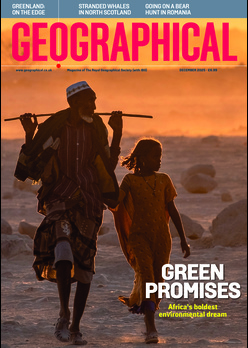
Human-wildlife cooperation, like the bond between honey hunters and greater honeyguides, is threatened by ecological and cultural change
In parts of sub-Saharan Africa, a small, brown bird known as the greater honeyguide leads local honey hunters to nearby bee colonies. It then patiently waits for them to subdue the bees with their smoke and tools, before feeding on the beeswax left behind after the honey has been harvested. It’s one of the last remaining examples of mutually beneficial human–wildlife cooperation, which, according to a study published in Conservation Letters, are at risk of being lost.
Mutualism between humans and wildlife – where free-living species and people actively work together – was once more widespread. There are two known locations (Russia and Australia) where human–orca cooperation once occurred, where orca would herd marine mammals towards humans who would then kill and share the prey with them. In Australia, this practice is thought to have lasted 100 years, before European settlers forcibly removed the indigenous Australians from their land. In North America, numerous indigenous reports reveal that people once cooperated with wolves to hunt bison, the wolves being the better trackers and the humans better equipped to kill the bison with spears.
Cultural damage caused by colonialism and, more recently, advances in modern technology, as well as ecological impacts, continue to threaten the future of these traditions. Once lost, they will likely be very difficult to restore, and may have wider impacts on the local ecosystem. To keep these traditions alive, the study recommends that traditional knowledge must continue to be recorded and shared, and wildlife conservation strategies must involve local communities. While extensive work has been done to mitigate human-wildlife conflict, the value of human-wildlife cooperation has been overlooked.




